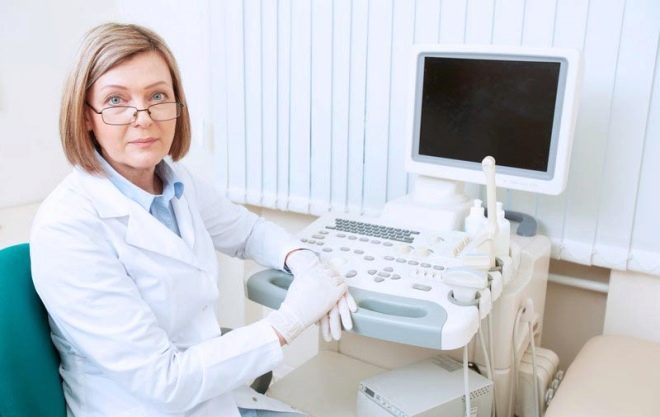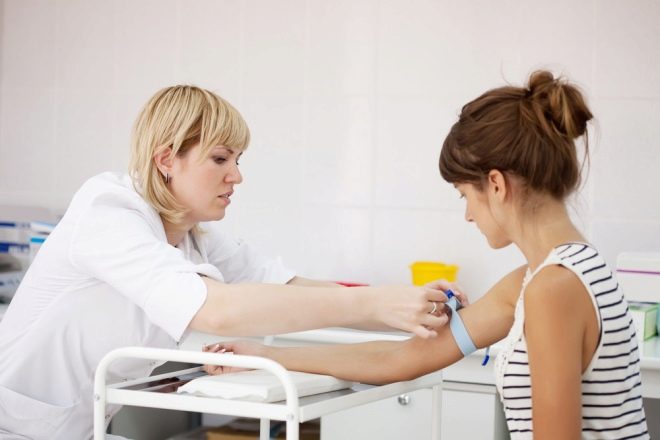16 week of pregnancy: what happens to the fetus and the expectant mother?
The fourth month of pregnancy is coming to an end. During this period, a woman becomes a real beauty: her cheeks turn pink from an increase in the amount of blood circulating in her body, her hair becomes strong and shiny, the range of sensations is the widest. This is usually the 16th week of pregnancy. We will tell in more detail in this material about the new things she brings in the development of the baby and the health of his mother.
How many months is it
Gestational age can be considered differently. If you use a regular calendar, in which each month is more than 4 weeks, then you get one value, if you take conception day as a starting point, then the deadline will be different.
To make women easier and more understandable, and doctors could more quickly orient themselves in what period the patient is at, it is customary throughout the world to count in obstetric weeks.
To calculate the period, the doctor needs to know only the date of the onset of menstruation, which were the last before the onset of pregnancy. The first day of this period is considered the first day of pregnancy. Now there are 16 obstetric weeks: this means that 14 embryonic week has gone from conception, and already at least 84 days (about 12 weeks) have passed since the start of the delay.
The second trimester of pregnancy is underway, and its fourth obstetric month ends this week. There are still six lunar months before birth, each of which lasts 4 weeks. Pregnancy has not yet reached its “equator”, until the middle remains exactly a month.
Feelings of the future mother
The woman froze in anticipation - very soon it will be possible to feel the first movements of the crumbs. This is an exciting feeling that is very difficult to compare with anything. Many women, even many years after pregnancy, sometimes experience them in their sleep, this is the unique “memory” of the female body.
Primiparous until, most likely, do not feel anything, if they are not pregnant with twins. In women, expecting a firstborn, on average, the first slight movements begin to be felt only by the 19-20 week. However, if the future mother has a second or third pregnancy, the chances that she will experience the first movements right now are quite high - about 30% of future mothers who are pregnant again experience the joy of the first movements exactly at 15-16 weeks of pregnancy.
With multiple pregnancies, stirring babies are already quite well distinguishable. Very thin women who are pregnant for the first time may also have strange sensations, which, due to inexperience, they perceive for intestinal motility, for “rumbling” in the stomach, for fermentation of intestinal gases. In general, the time of active movements has not yet arrived, and only very sensitive pregnant women can feel them now.
At week 16, the vast majority of pregnant women noted a marked improvement in their state of health. If earlier a woman experienced toxicosis, could not eat normally, sleep, suffered from headaches, diarrhea, constipation, was capricious and fastidious, now comes a time of relative peace, not only for the woman herself, but for her entire family.
The main tests and examinations have been left behind, the time of the second screening has not yet come, there are less and less worries about the condition of the child, and there is more and more confidence that everything will be fine.
Everything that is happening with the baby and mother is somehow related to the level of the main hormones in my mother's body. In the first trimester, poor health, fatigue, fatigue, drowsiness and moods were caused by the effect on the brain, tissues and cells, the nervous system, muscles of large doses of the hormone progesterone, as well as specific "pregnant" hormones and proteins, for example, chorionic gonadotropin (hCG ). Now these substances have developed enough to prolong pregnancy, hormonal changes in the body is over.
That is why toxicosis passes, nausea recedes, inability to adequately perceive certain smells and tastes, the head does not hurt so often, the woman falls asleep better, sleeps better. At week 16, appetite begins to rise. Now they want to eat even those who could not look at food throughout the entire first trimester. If you do not follow the diet now, weight gain will be excessive, and this will greatly complicate the second half of pregnancy.
Psychologically and emotionally, a woman feels calmer, more confident. Of course, this does not completely abolish all her quirks, for example, some continue to want herrings with jam or cucumbers with bacon, but the expectant mother has the right to do so. Women who have not been affected by fads and toxicosis usually do not feel anything out of the ordinary in week 16, except for vigor and good mood noticeably comes.
Many pregnant women this week are faced with an eternal women's problem - they have nothing to wear. Not because the available things do not suit them, but because everything that was right before the pregnancy is now hopelessly small, and special clothes for pregnant women are still great. This period is not the most suitable for changing clothes, because the tummy is growing rapidly. To cope with the problem will help the purchase of ordinary clothes for a couple of sizes larger, spacious cut.
This week, women often have complaints of "buzzing" pain and tired legs, even after a short walk. This is due to the fact that the weight is growing, the center of gravity is changing due to the enlarged chest and the growing tum, which creates a significant load on the legs.
The future mother, regardless of her body size, already feels her own womb well. Therefore, not all postures for sleep, yoga, gymnastics and sex are already suitable, now you have to choose such body positions in which the uterus will be less felt. It was at the 16th week of pregnancy that a waddling gait peculiar to all future moms, which is popularly called a "duck" gait, appears in women.
Many women in the current period complain that from time to time pulls the lower back, aches the lower abdomen. A variety of short-term tingling, whipping is quite natural, because along with the dynamic growth of the uterus, the ligaments that hold this organ grow and stretch, which the woman feels as a result. Weak aching back pain should also not be surprising - the chest has become heavy, the center of gravity has changed.
At week 16, almost everyone experiences a physiological rhinitis, which was previously caused by swelling of the mucous membranes, which became a side effect of progesterone that was raging in the body. Nasal breathing is restored.
Heartburn, which affects some pregnant women, according to popular rumor, is a sign that the baby’s hair grows in the womb.
From the point of view of official medicine, there is no correlation, and the stomach simply begins to crush the bottom of the growing uterus, which results in a part of the gastric juice being thrown back into the esophagus.
Changes in the body
The uterus continues to grow. Now the height of its bottom is already 13-14 cm, it changes shape from rounded to oblong, adjusting to the growing child. The amount of amniotic fluid now reaches 250 ml, this is a whole glass. In it comfortably accommodates already pretty grown up baby. If from the navel to the pubis mentally draw a vertical line, then now the uterus will be exactly in the middle between the pubis and the navel. She is already very persistently “forcing” the other abdominal organs to move.
The cervix has an average length of 36.2 mm, in pregnant women with a firstborn - 36.5 mm, and in women who have previously given birth - up to 36.8 mm. The location of the main female reproductive organ is such that there is no longer any doubt for others - the uterus has entered the abdominal cavity, and every day the tummy is rounded more and more, the waist is smoothed, the pregnancy becomes obvious.
To feel where the uterus is, the woman can already herself through the anterior abdominal wall. If your back hurts and your back doesn’t have any unusual discharge, then you shouldn’t worry - the ligaments thicken, get stronger, they have to keep the uterus for quite a long time. This process simply can not proceed completely painless.
Due to active external changes, in which the priest, chest and abdomen grow most rapidly, the first stretch marks on the skin may appear now. Week 16 is a great time to take care of stretch prevention, if this has not been done before.
The blue venous net on the chest should not frighten, it appears due to the increased blood supply, it does not threaten anything, it is not necessary to treat it, after birth it will cease to act so clearly.
As for weight gain, at week 16 it is already quite substantial. Thin women can now add up to 3.6-3.8 kilograms to their original weight. In future mothers with a normal weight or a slight excess of the norm by the beginning of the 16th week, about 3 kilograms are added, and future mothers with various degrees of obesity before pregnancy now normally add no more than one and a half kilograms.
It is more important to control your weight now, because the appearance of edema at the 16th week of pregnancy is not at all uncommon. If a woman begins to notice that the wedding ring has ceased to be removed from the finger, that in the morning her wrists, face and ankles are somewhat swollen, you should definitely inform your doctor.Perhaps these are the first symptoms of preeclampsia.
Some pregnant women can now note occasional numbness in the fingers. We are talking about physiological tunnel syndrome - pinching of the median nerve, which during pregnancy becomes possible due to the softening of ligaments and tendons. Usually, after childbirth, tunnel syndrome retreats completely. But cramped calf muscles, which often torment pregnant women in the second trimester, are nothing more than a sign of a lack of calcium in the body.
Urination ceases to be frequent. If earlier a woman could run to the toilet for a small need several times in an hour, now she feels the urge to be much less common. However, intestinal problems may persist - the muscle walls of the lower part of the digestive system continue to be relaxed under the action of progesterone, the peristalsis is reduced, and constipation is not excluded.
Externally, the future mother is changing before our eyes - she is becoming more rounded. Coupled with the changed and become somewhat awkward gait, it looks pretty sweet. Therefore, you should not be surprised if right now the husband starts to show more care, and the relatives start offering their help in doing household chores. There is no need to refuse - the power of a woman should be saved.
Many expectant mothers, who had birthmarks or freckles before pregnancy, may have age spots. Freckles on the face become bright, and some of them cover the entire back, arms. This is a manifestation of the action of increased formation of melatonin pigment - the phenomenon is quite normal for mid-pregnancy. Nothing to smear such spots and freckles is not necessary. They themselves fade and disappear, but some time after birth.
Increasing the amount of circulating blood often leads to a decrease in blood pressure. If a woman does not feel dizzy spells, does not lose consciousness, there is no need to worry - such a decrease is quite physiological.
With obvious manifestations of hypotension (when dizzy, sick, throws into heat and cold, there is loss of consciousness and balance) you need to consult with your doctor.
The rate of hCG for this week is from 6,140 to 130,000 Honey / ml. This hormone gradually decreases in the body. It reached its maximum point of 12-13 weeks, now there is a decline, which will last until the birth.
At week 16, the new circulatory system, the “mother-placenta-fetus”, is fully functioning. The placenta takes care of the baby and fully provides it with everything necessary.
The nature of the discharge in normal should not change - it remains moderate, not having a sharp unpleasant odor. Any color other than white or light yellow is not considered normal. Especially dangerous are bloody discharge. If atypical discharge occurs, it is recommended not to wait for the woman, but to immediately contact your doctor.
Baby development
Big mistake to call a baby now an embryo. The most important embryonic period ended about seven weeks ago. All organs are formed, and now the crumb is just growing. He is the fruit, and that is how it should be treated.
The weight of the baby at week 16 reaches 80-115 grams, and its growth is 12-16 cm. In size, the baby resembles an avocado or a newly born kitten. A crumb could fit in the palm of an adult.
Appearance
Neck crumbs this week completes its formation, now the baby keeps his head straight and can turn it to the sides. This feature makes it all the more like a tiny person. True, the baby's head is still more than the rest of the body parts, but this imbalance gradually disappears, smoothes out. At the time of birth, the head will occupy only one-fifth of the total body area. The face is fully formed.
The eyes are in place, the auricles are formed. This week the oculomotor muscles begin to work, and the crumb begins to rotate with the eyeballs, although until he can open his eyes, they are covered with thin eyelids. Eyelashes appeared on the eyes, there are eyebrows, many babies have hair growing on their heads.
Externally, your child is still very thin, covered in folds. The skin of the baby, if it could be seen in color and real-time, would surprise with its unusual color - it is rich red with purple hues. This is due to the fact that the blood grid shines through thin skin, like parchment. As soon as the subcutaneous fat begins to be produced, the baby will become more “plump” and the skin will become pink.
This week, the body of the baby is covered with lanugo - downy hairs. This is the very first hair, very thin and delicate, it appears as a result of the beginning of the work of hair follicles. Lanugo usually falls completely before birth, less often a part of such hair cover remains and disappears in the first weeks after the birth of the child. The body of the baby is covered with original grease, which protects it from the effects of the aquatic environment.
Hands become less long, legs begin to "grow up". Previously, the upper limbs were significantly longer than the lower ones, and because of this, and also because of the large head, the baby resembled a tadpole.Now the baby has all the individual features of appearance: small fingers have a unique pattern - prints, nose - sizes and shape inherited from parents, height of forehead, chin protrusion - everything has its own, individual. He already looks like someone from his parents or close relatives, only to grasp this similarity is very difficult.
Nervous system
A week earlier, control of the functioning of the body began to take on the central nervous system of the baby. His movements became more coordinated, although he often continues to wave uncontrollably with his arms and legs. The formation of the gray matter - the cerebral cortex - is in full swing. The establishment of neural connections continues, Now the number of fetal nerve cells is increasing by 5,000 per minute.
Red bone marrow already fully ensures the production of blood cells. Reflexes develop and refine. Scarce copes with the process of sucking, swallowing. He grabs the handles that comes within reach, responds to loud noises, external stimuli.
Muscles and Bones
Almost all the muscles are formed and are now actively growing. Best of all, while the mimic muscles are developed, the baby almost constantly involuntarily winks, frowns, smiles, wrinkles the nose, and folds the lips with a straw.
Bone hardening continues. They become more durable, accumulate calcium. At week 16, full-fledged joints appear in the arms and legs of the baby.
Sense organs
The vision of the baby is not yet developed. Through tightly covering the eyes of the eyelids, he is able to distinguish only bright light and darkness. The next stage will be blinking, he will learn to do it after 28 weeks, when he begins to open his eyes.
The ear of the crumbs continues to form. External organs are already formed, now the process of formation of the functionality of the inner ear is in progress. As soon as this process is completed, and it will happen approximately in a month, the baby will begin to hear fully. In the meantime, he hears only the vibration that sound waves create. At the same time, my mother’s voice “vibrates” differently than papa’s, and the alarm clock of the parents wakes the crumbs in the same way as adults in the morning, only perceived by them as high-frequency vibration.
Since the auditory perception is already there, the mother should definitely talk to her baby, sing to him those songs that she will sing after birth - having heard them, the baby will “recognize” the melody and voice and calm down. You can read the kid, with him watch good and kind cartoons: all this, according to perinatal psychologists, is a great contribution to the formation of the outlook and character of the baby.
At the 16th week of pregnancy, the baby has a well-developed sense of touch, it distinguishes the tastes of the amniotic fluid, since the taste buds of the nipples and nerve endings on the skin "work" already in full force. The sense of smell is absent - in the aquatic environment the child cannot breathe through his nose, respiration occurs by obtaining oxygen through the placenta from the mother’s blood.
Endocrine system
The baby now has another system - the endocrine system. The endocrine glands begin to work: they produce the hormones necessary for the growth of the baby. Their production and activity is already "guided" by the pituitary gland. The pancreas produces insulin, which is necessary for the breakdown and absorption of glucose. The thymus, epiphysis and adrenal glands are improved.
The adrenal cortex has already begun to produce hormones, and the thyroid gland has long been producing thyroid-stimulating hormones, without which the deposition of calcium in the bones of the baby is impossible, they could not harden.
Internal organs
One of the most important now is a temporary organ - the placenta. The life and development of the child largely depend on her condition and health. The crumb is securely connected to the “children's” place by the umbilical cord - it is very strong, now the cord cord theoretically can withstand a load of up to 6 kilograms.Its length is almost half a meter, and its diameter is more than 2 centimeters.
All the internal organs of the baby tirelessly work. The liver, in addition to the hematopoietic function, "connected" to digestion, the gallbladder produces bile, the intestines, due to the thin fibers on its inner wall and the development of the muscular system, quite often shrink: almost as it will do after the baby is born.
The kidneys produce urine, the bladder accumulates it and brings it out through the urethra. Urine enters the amniotic fluid, but they do not become dirty because the amnion membranes help the fluid to be renewed and remain sterile every three hours.
At the 16th week of pregnancy, the child begins to synthesize hemoglobin. In the blood now there are monocytes, lymphocytes, erythrocytes. The composition of the blood of the fetus is almost full, his blood type and Rh factor are now determined without problems.
All blood vessels, both small capillaries and large trunk vessels, have completed their formation, now they are just growing and are already functioning normally.
Heart through the circulatory system pumps up to 24 liters of blood per day. The heartbeat of the fetus is now twice the frequency of the heartbeat of his mother - the average heart rate this week is 150-170 beats per minute. You can listen to a heart not only during a visit to an ultrasound examination room. A woman can easily cope with this at home with the help of the most usual phonendoscope.
Small lungs, the formation of which cannot be considered complete until the end of the third trimester, until a sufficient amount of a special substance, surfactant, has accumulated in them, already have clear contours, and the bronchial tree has all the necessary ramifications. The chest cage several dozen times a day makes movements resembling its expansion during inhalation and contraction during exhalation. Of course, this is not yet breathing, but this is his type.
Child sex
The sex of the child is now determined by ultrasound with great accuracy. A prerequisite for successful sexual identification is the location of the baby, convenient for inspection. If the crumb turns to the sensor back, then with all the desire the doctor will not be able to see anything except the priests. In boys and girls, the external genitalia are formed and grown. If the crumb is not among the “particularly shy”, then you can consider the main sexual sign of the child on almost any ultrasound machine.
In young girls, the ovaries have descended into the small pelvis, because they have been forming and developing for the time being in the abdominal cavity, there are fallopian tubes, a uterus, a vagina and two pairs of labia (big and small). In the ovaries of babies, there are already about 5 million eggs.
In boys, the testicles are not in a hurry to the scrotum. They are in the abdominal cavity and will begin to descend a little later, finally the process will be completed before the birth. In a small percentage of newborn boys, the testicles do not have time to descend, and sometimes this happens after birth.
Boys in the body are already producing male sex hormones, in particular, testosterone. In girls, their own hormones are still minimal, they are content with the maternal hormonal background.
The accuracy of sex determination this week by ultrasound is 85-90%. Non-invasive prenatal DNA test determines the sex of the baby with an accuracy of 99.9%.
What did the baby learn?
At week 16, the kid learns from what his parents and carers will persistently wean him from - he learns about spitting. Now the crumb does not just open his mouth, yawns, swallows and hiccups, but also begins to spit, and this, apparently, gives him pleasure.
Baby actively spends time out of sleep. He plays with his legs, catches the umbilical cord, sucks cams, hugs himself by the shoulders. There is still enough space in the uterus to swim and to explore. The kid actively uses it, his movements are now very intensive and diverse.
Naturally, a woman will not be able to feel everything, the first movements are only tangible enough contact between the baby and the walls of the uterus, and for the time being it may rarely touch him, it is spacious.
Baby on ultrasound
At week 16, ultrasound is not routine and mandatory. It takes 2-3 weeks until the second screening, and there is no need to visit the somnologist (ultrasound specialist). Ultrasonography on purpose is now done only if the obstetrician-gynecologist had any concerns for the health of the woman and child. If pregnancy proceeds without complications and problems, an ultrasound scan can be carried out only at the personal request of the woman in a private clinic, and, of course, at her expense.
If a woman now decides to go on an ultrasound scan and selects a three-dimensional format for research (3D ultrasound), an unforgettable meeting with her own child is waiting for her, who is very likely to show everything that she learned in her mother's womb. It will be very interesting and touching.
Even if the goal of the woman is only to determine the sex of the baby, on the ultrasound, in any case, fetometric measurements are made, so the expectant mother will be very interested in what sizes meet the standards for 16 weeks.
Table fetometry 16 week of pregnancy
BPR, mm | LZR, mm | Abdominal circumference, mm | Shoulder length, mm | Thigh length, mm | Fruit weight, gr |
31-37 | 41-49 mm | 93-102 | 15-18 | 15-18 | 77-118 |
The thickness of the placenta at this period is about 18.5 mm. The umbilical cord has three vessels. At this time, unfortunately, it is still very difficult to diagnose by ultrasound some diseases and defects of internal organs, for example, of the lungs, because their formation is not completed, the kidneys and the brain are difficult to assess, but gross developmental defects, if they occur to be, already well distinguishable and cause no doubt.
If the doctor now claims that everything is normal, this does not mean that the baby is 100% healthy, but there is a probability of more than 80% of the absence of gross developmental abnormalities.
The KTR (coccyx-parietal size of the fetus) is no longer measured at this time: the baby is too big, other fetometric data come out in the first place among the indicators of its development. It was possible to establish the duration of pregnancy with a day to the KTR earlier, now the doctor will not answer with great confidence what time you have - 15 weeks and 3 or 4 days or 15 weeks and 5 days. He will simply indicate that the size of the baby corresponds to or does not correspond to the gestational age of 15-16 weeks.
Possible complications and risks
Week 16 is not considered dangerous, but a woman should never lose her vigilance: how quickly she can feel the slightest changes in her state of health depends on how quickly she will be provided with qualified medical care. Consider what dangers may threaten the mother and baby at this time.
Colds, viral infections
It is quite difficult to hide from a common cold or a viral infection in the season of epidemiological distress. The woman has not yet gone on maternity leave, she is forced to attend work, study, go on public transport, which only increases the likelihood of catching influenza or ARVI. If this happens, do not worry much. Now the baby is under the protection of the placenta, which is a reliable barrier. The crumb is formed, and mom's disease can no longer cause him irreversible anomalies in the development. The consequences of the cold are minimized for the baby.
Certain danger lies in the high temperature and uncontrolled medication. Heat and fever can lead to problems with the placenta, so it is important to call a doctor in time and get recommendations for taking approved antipyretic drugs.
Now a woman should not be afraid of more dangerous complications - sore throat, otitis, because a woman can already use antibiotics for treatment. Some of the antibacterial drugs, such as Flemoxin, are often prescribed to expectant mothers in the event of bacterial infections.
Freezing pregnancy and threatened miscarriage
Week 16 is considered quite dangerous from the point of view of the unexplained, but not so rarely encountered missed abortion. Even if mother and baby successfully overcame other “critical” periods of time (3-4 weeks, 8-10 weeks), then now it is necessary to make the “last spurt”. The probability of miscarriage at obstetric week 16 exists, but it is very small.
About missed abortion at 16 weeks can be guessed by the disappearance of the symptoms of pregnancy, first of all perturbations, if they are already observed. If the woman still does not feel perturbations, it will be rather problematic to establish the moment of death of the baby, and the doctor will suspect a non-developing pregnancy, who will be surprised by the lack of growth. belly, the height of the bottom of the uterus, and on ultrasound it is confirmed that the baby does not have a heartbeat and physical activity.
In any case, the expectant mother should pay attention to symptoms such as the appearance of a strong pulling back pain and lower abdomen, unusual (especially bleeding) discharge, the general deterioration of well-being.
Such symptoms should not be left without attention and medical care. A woman should take a horizontal position and call an ambulance. Usually, it is possible to save the pregnancy, if they asked for help in a timely manner.
Digestive problems
Inattention to their own diet, overeating, lack of exercise at week 16 can only exacerbate the problems that can be observed to one degree or another in all pregnant women. Constipation increases the likelihood of hemorrhoids, which is desirable to avoid by all means, because treating it to a woman in an “interesting” position is quite problematic - not all medicines for these purposes are allowed for pregnant women.
If a woman has previously had problems with the health of the digestive organs, Be sure to visit a gastroenterologist to get personalized nutritional advice. and lifestyle based on a specific diagnosis. So, if a woman previously had a colitis, now she should avoid legumes, soybeans, an abundance of meat food, and during pregnancy after suffering a peptic ulcer, a treatment table recommended not for expectant mothers, but an ulcer should be observed to prevent relapse.
It is important not to eat unfamiliar and new products, because now the woman is more likely to develop food allergies with all the unattractive consequences for her health.
ICN
The cervical insufficiency in a woman imposes many restrictions on her. However, prognoses can be positive only if all medical recommendations are strictly followed. The short cervix is not a sentence, but only a feature of this part of the uterus in a particular woman. At week 16, shortening is considered solely pathological, it should not be.
Depending on the type of shortening and the reasons for this, doctors may decide to impose a pessary or surgical sutures on the neck, to strengthen it, to give the opportunity to bring the child to the date on which his birth will not pose a danger to survival. Will now the regime for a woman's bed or is she simply recommended a benign mode, only the doctor decides.
It is important for a woman to obey the doctor in everything, not to allow situations that can cause the appearance of uterine tone. To determine the tone now is not difficult - the stomach becomes hard, aching and pulling.
The mismatch of the size of the fetus time for ultrasound
Women encounter such a phenomenon quite often, and this causes well-founded anxieties and experiences in future mothers. Doctors warn those who wish to decipher ultrasound on their own and consult with Internet advisers that a small deviation of any parameters of a baby from the norm cannot be considered pathology. In this case Mom's experiences will hurt the baby more than you can imagine.
Significant and requiring additional examination is considered a backlog of 2 weeks or more. In this case, the doctor makes a preliminary diagnosis of intrauterine growth retardation, and begins to search for the true cause of the lag. This may be the consequences of viral diseases, transferred in the first third of pregnancy, the bad habits of the mother, hypoplasia or placenta disease, chromosomal pathology, rhesus conflict, and many other reasons.
After this, treatment is prescribed, supporting vitamin therapy, drugs improving uteroplacental and fetoplacental blood flow.
Analyzes and surveys
At 18-20 weeks, the woman will go to the second screening ultrasound. But she can get a referral for blood tests that are included in this screening now. This will be a familiar biochemical blood test to determine the concentration of the three components - hCG, free estriol and alpha-fetoprotein, the so-called "triple test".
Before the analysis, as in the first screening, one should refrain from ingestion of fatty foods, large amounts of sweet, salty, 10 hours before delivery, you just need to drink water and do not eat anything. Blood is taken from a vein in the morning.
The results of the blood test are not so closely related to the ultrasound data, so there is no need to prescribe these two tests on the same day.
In addition, at week 16, a woman is recommended to pass an urinalysis. Right now it is important to find out how the future mom's kidneys work, if she has urinary problems, inflammatory diseases of the urinary system.
Women with a history of adrenal cortex disease, who are now carrying boys, often do a blood test for testosterone, because they may experience an overdose of this hormone due to its high content in their own body. Other tests for the current week are assigned only for individual indications.
Recommendations to the future mother
A rounded tummy of a pregnant woman now requires a more careful attitude towards herself. It is necessary to wear clothes from natural fabrics, in which the skin can fully “breathe”.
Shoes with heels are better to be postponed until better times and give preference to comfortable, sustainable shoes with a flat sole. It is important to do gymnastics, make daily walks in the fresh air, monitor your diet and weight.
A few helpful tips will help make pregnancy safer, easier and more enjoyable.
Bandage
As an auxiliary tool, prenatal bandage can significantly facilitate the carrying of the baby. Usually they start to wear it from the 19th to the 20th week, but for women who are already experiencing heaviness in the back, they complain of pain in their legs, you can choose and start using such an orthopedic device.
There are many models, any orthopedic salon will offer at least 5 types of bandages. Which one to choose is up to the woman herself, before that you need to try on everything and stop the choice on which one is most convenient. It is important that the stomach is supported from below carefully, so that the bandage does not rub, do not crush.
Especially strongly at 16 weeks a bandage is recommended for women with threatened miscarriage, with cervical insufficiency. This reduces the load on the lower back and legs, the bandage more evenly distributes the weight of the growing tummy.
Wearing it is recommended for women prone to varicose veins, pregnant twins, large fruit. The bandage helps in the prevention of stretch marks on the stomach. If you want to start wearing it, but there are no strict medical indications for this, be sure to consult your doctor - usually doctors have nothing against such a useful device.
Courses for pregnant women
Already, a woman can sign up for free courses for pregnant women, they are at every antenatal clinic. For the future mother, this is a great opportunity to meet other women at the same time, and they will have enough common topics for communication.
It is welcomed, if the future father will come to practical classes on actions in the event of the onset of labor and on caring for the newborn. Experienced pediatricians and obstetricians will tell you how, when and what to do.
Not only pediatricians and gynecologists deal with women in courses. Psychologists come to them, including perinatal ones, who talk about how the unborn baby now perceives this world and everything that happens in it.
During the courses, a woman will be able to learn how to do gymnastics correctly, which will strengthen muscles before childbirth, breathe during labor and attempts, how to eat, what to buy for a baby.
Safety belt and flights
Modern pregnant women are very mobile. “Interesting” position is not always a reason to postpone trips, holidays, business visits. Air travel is not considered dangerous in the second trimester, but it’s still better to consult your doctor.
If a woman has problems with overweight, blood pressure, if there is a cervical insufficiency, most likely, the doctor will be strongly opposed to flights.
Traveling by car or going to a personal car for work, it’s important for the expectant mother to remember that it’s not worth opening windows in the car, so she will get a fair amount of exhaust fumes, especially if she is stuck in a traffic jam for half an hour.
The seat belt in the car should fix the tummy from below, and not along the navel line. It is advisable to place a small pad under the lower back, which will allow the woman to keep her back straight and her knees at a right angle, thus avoiding a disruption in the blood supply in the pelvic area.
Sex
Intimate relationships at week 16 are quite permissible and even welcomed if there are no contraindications, which include pathology of the placenta (low location, presentation), shortening of the cervix, the threat of miscarriage. If the attending physician has not introduced such a moratorium, the couple may well live an active sex life.
Naturally, one should observe reasonable security measures, abandon the rider’s posture and other positions where penetration is too deep. You can not exert pressure on the growing belly. It is not recommended to use sex toys and lubricants with a warming or cooling effect. For intercourse and sleep, it is better to choose a pose on the side.
And in a dream, if a woman sleeps on her right side, her left leg should be bent a little. The woman has already refused to sleep on the back and abdomen because of the grown uterus, since this is a nuisance.
Reviews
The features of this week women, who left their reviews on the Internet, describe as an amazing mixture of emotions and aspirations - they are becoming more and more interested in issues related to home, housekeeping, raising children. It’s likely that it’s too early to talk about the so-called “nesting instinct”, which is observed in the later periods, but the beginning has already been made - the woman is becoming more economic and domestic.
Women, who by the 16th week have already figured out the sex of the baby, are beginning to pick up a name for him or her, and this question is for many very serious and even painful. Some are already beginning to buy things for the baby, in order to free time for themselves and not forget anything.
This is the term that many choose to change their eating habits. So, vegetarians are now starting to add fish and milk to the menu in order to provide the baby with essential amino acids. But diets for weight loss, which are actively discussed by future mothers, experts are not recommended to use now.
Many begin to worry about severe skin itching in the abdomen, thighs, chest. So manifests itself stretching the skin. Future moms at 16 weeks begin to apply creams and emollient moisturizing creams, hypoallergenic and time-tested.
About what happens to the fetus and the future mother in the 16th week of pregnancy, see the following video.





































































